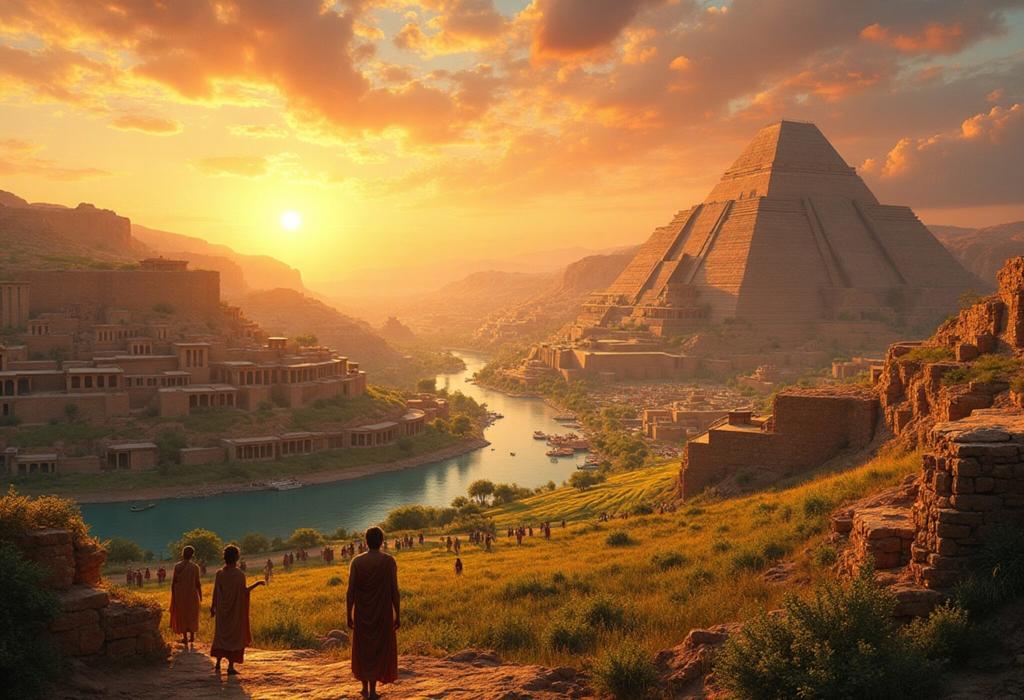For more details on this content, please review the step-by-step guide and frequently asked questions.
A Journey to the Cradle of Civilization: Mesopotamia

Step-by-Step Guide
Understanding Mesopotamia
Begin by understanding the geographical layout of Mesopotamia. This region lies between the Tigris and Euphrates rivers, encompassing parts of modern-day Iraq, Syria, and Turkey. This area is often referred to as the 'Cradle of Civilization' due to the early advances in agriculture, urbanization, and writing.
The Birth of Agriculture
Explore how agriculture emerged in Mesopotamia. The rich soils near the rivers supported the development of farming. Learn about the shift from hunter-gatherer societies to settled farming communities around 10,000 BCE. Discuss the domestication of plants and animals that occurred during this time.
Emergence of City-States
Investigate the formation of city-states in Mesopotamia. Around 3000 BCE, complex societies and organized communities began to develop. Look into major city-states such as Sumer, Akkad, Babylon, and Assyria. Describe their governments, economies, and social structures.
Introduction to Writing
Delve into the invention of writing in Mesopotamia. Discuss how the Sumerians developed cuneiform around 3200 BCE, allowing for the recording of transactions, laws, and stories. Highlight the significance of writing in preserving culture and history.
Religion and Mythology
Examine the religious beliefs and mythology of Mesopotamian civilizations. Most societies practiced polytheism and built monumental temples (ziggurats) to honor their deities. Discuss key gods and goddesses in Mesopotamian mythology and their influence on daily life.
Technological Innovations
Highlight the technological advancements that originated in Mesopotamia. Explore innovations such as the wheel, plow, and irrigation systems that supported agricultural expansion and trade. Discuss their impact on society and neighboring regions.
Law and Governance
Investigate the legal systems and governance of Mesopotamian societies. Focus on Hammurabi's Code, one of the earliest known legal codes, which established laws and justice in society. Analyze how these laws influenced modern legal frameworks.
Art and Culture
Explore the artistic achievements of Mesopotamia, including sculpture, pottery, and architecture. Discuss how art reflected social status, religious beliefs, and technological advancements. Include notable artifacts like the Ishtar Gate and cylinder seals.
Impact on Future Civilizations
Reflect on how Mesopotamian civilization laid the groundwork for future cultures. Examine its influence on regions such as Egypt, Persia, and the broader Mediterranean. Discuss the spread of ideas, innovations, and cultural practices.
Preservation and Archaeology
Conclude by discussing the importance of archaeology in uncovering Mesopotamian history. Highlight significant archaeological sites like Ur, Uruk, and Babylon, and the role they play in understanding ancient civilization. Discuss ongoing preservation efforts and their significance in modern times.








